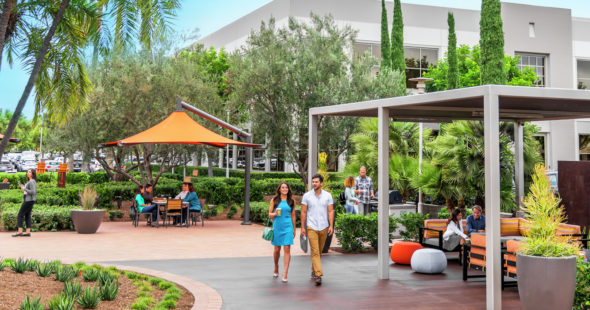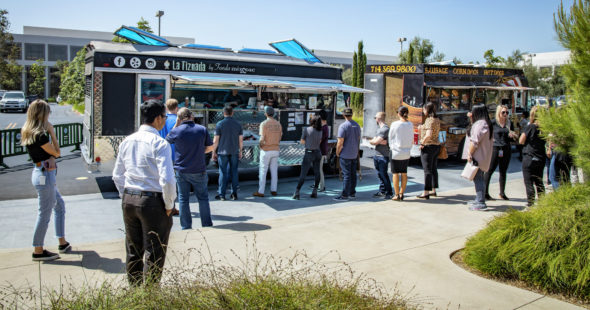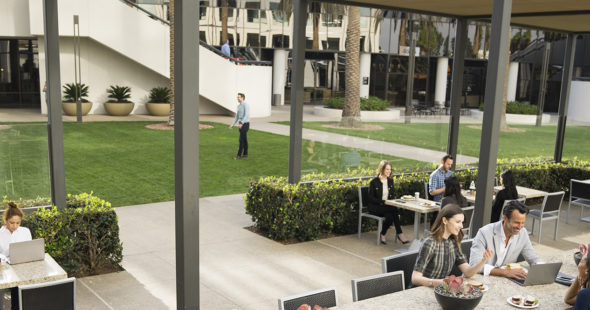In popular culture, “multigenerational workplace design” has become synonymous with Millennial-friendly trends like game rooms and open floor plans. But to truly understand the challenges of four generations coexisting under one roof, we must consider how today’s work environment either facilitates or hinders communication, productivity and business growth. What younger generations expect from an office can be very different than what older generations expect. Smart workplace design is key to creating adaptive space that meets these varying expectations and workstyle preferences while engaging all employees.
At Irvine Company Office, these guiding principles shape our creation of human-centric spaces for every generation.
Designing for Experience: The Importance of Human-Centric Spaces
The arrival of Millennials in the workplace a decade ago coincided with technology advances that enabled greater mobility and flexibility. These advances untethered employees from their desks, redefining the standard workday. As companies shifted away from the traditional 9-to-5 model, this shift created new possibilities for how workspace could be used. Today, the workplace is continuing to evolve from transactional and utilitarian to experiential and participatory.
The Leesman Index calls this change the workplace experience revolution (EwX). “The workplaces where employees report the highest levels of productivity, pride and sense of community consistently deliver a particular type of employee experience with stand-out infrastructures that are superbly supportive, immersive, pleasurable and on the side of the user.”
For Millennials, their satisfaction, productivity and engagement are closely tied to their workplace environment– and this generation overwhelming expects this environment to be experiential rather than transactional. Providing a workspace that meets these expectations is important for retaining young, rising talent. The benefits of an experiential workplace go beyond Millennial talent retention, however.
In an experiential environment, employees become active participants who develop a meaningful connection to both their workplace environment and their fellow coworkers. At Irvine Company Office, we create space that serves a variety of needs throughout the workday. In outdoor workspace, for example, coworkers can brainstorm over coffee, collaborate on team projects, host presentations or pitch nights, and connect at a company happy hour. This experiential environment fosters the strong bonds that are key to employee engagement and innovation across all generations.
Designing for Possibility: The Importance of Flexibility
It’s a rule of thumb in real estate: no two spaces with the same square footage are equal. The floor plate is the key differentiating factor that dictates workplace layout and design options. The more flexibility a company has within a floor plate, the easier it is for businesses to customize a workspace that’s conducive to employee success– giving employees control over their work environment.
In a multigenerational workplace with a variety of workstyle preferences, this flexibility and perception of control is key for employee success. Offering space for quiet, focused work is just as important as offering team breakout rooms. When employees can choose where to work, they experience a greater sense of autonomy, which in turn lowers stress levels and boosts productivity and employer satisfaction.
In addition to the physical floor plate, we also consider how the broader workplace environment can be flexible to support a variety of needs across generations. For younger millennials and Gen Z, the workplace is becoming a social hub, and opportunities for communal dining or after-hours events are important. For older millennials and Gen X, who feel squeezed for time between professional and personal demands, convenience is paramount. Access to on-site services, like a fitness center, help meet these personal needs.
By designing for experience and possibility, today’s workplace can effectively meet the needs of four generations and create a human-centric space that supports engagement, collaboration and growth.





